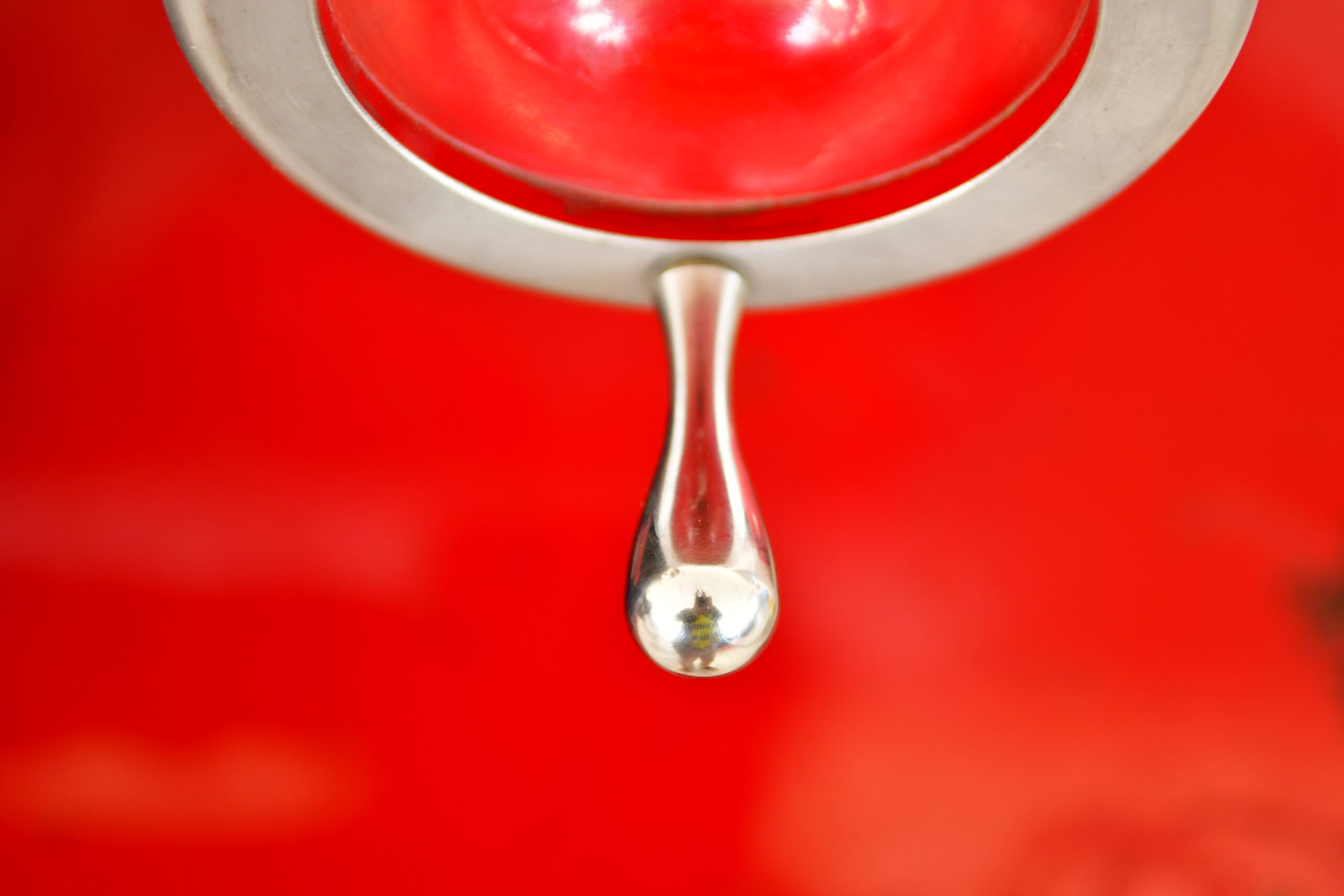Silicone Structural Sealant Manual for Constructors
Did you know that nearly 75% of building professionals rely on silicone structural sealants for effective waterproof building? These high-performance sealants are not just a fad; they have become indispensable in contemporary construction projects for their exceptional longevity and strength against weather elements.
Silicone framework adhesives provide robust bonding and heightened compatibility with a variety of materials. This makes them the go-to option for builders concentrated on longevity and reduced upkeep. Their effectiveness in various applications, particularly in structural connections and window sealing, shows how these construction adhesives play a vital role in enhancing the functionality and security of buildings.
Introduction to Silicone Structural Adhesives
Silicone framework sealants are a crucial innovation in building and building. They offer strong adhesion and elasticity, making them important in contemporary building design. Unlike conventional sealants, silicone sealants feature lasting elasticity. This is important in regions susceptible to shifting or growth.
The development of structural glazing sealants has been a game-changer. These sealants are crucial for various applications, both inside and outside structures. They ensure integrity in varied building projects. With a background extending decades, silicone sealant are now vital for security and aesthetics in architecture.
Builders and designers trust silicone sealants for their performance and flexibility. They are utilized in glazing and sealing façade joints, offering a dependable option for modern construction. As we delve into the types and features of silicone sealants, it’s clear they play a crucial function in construction practices.
Varieties of Silicone Adhesives
For builders and developers, it’s important to understand the different categories of silicone adhesives. The primary types are neutral rubber adhesive and reactive silicone sealant. Each category has unique characteristics that impact their use, making it essential to choose the right one for a project.
Neutral Rubber Adhesive
Non-reactive silicone sealant is the preferred for sensitive applications. It doesn’t release chemicals that could cause rust or harmful interactions with various materials. This makes it perfect for framework window sealing, particularly in joining panes. Builders often select this adhesive for working with alloys and other delicate materials.
Acid Silicone Sealant
Acid rubber adhesive is perfect for ventures with non-sensitive materials. It dries fast, making it great for filling gaps quickly. It’s utilized in both residential and business environments where speed and strength matter. Contractors appreciate its versatility, but caution is required when using it with substances that react badly to acids.
Key Attributes of Silicone Structural Sealant
Silicone framework sealants excel in building due to their standout attributes. They offer strong bonding, robust weatherproofing, and unmatched durability. These attributes are crucial for builders looking for a reliable adhesive for multiple uses.
Bonding and Compatibility
Top-notch structural sealants adhere strongly to substrates like panes, alloys, and concrete. This flexibility is vital for ventures needing a strong connection across various substrates. Constructors value this sealant for its capacity to ensure a solid connection, improving the structure’s integrity.
Weatherproofing
Engineered to endure harsh environments, weatherproof rubber adhesive stands up to ultraviolet light, moisture, and extreme weather. Such strength ensures it keeps performing effectively over time. It’s an perfect choice for ventures subjected to the elements or those in environments with fluctuating conditions.
Durability and Performance
One of rubber adhesives’ key qualities is their longevity. They are designed to last, even with structural movement. This flexibility and longevity make them a preferred pick for projects requiring to adjust and endure, guaranteeing steady performance over their duration.
| Property | Description | Advantages |
|---|---|---|
| Bonding | Strong bonding capability to multiple substrates | Guarantees building cohesion and reliability |
| Weatherproofing | Protection from ultraviolet light, humidity, and weather fluctuations | Enhances durability and prevents sealant breakdown |
| Durability | Capacity to withstand structural movement | Offers a durable and efficient seal |
Uses for Rubber Sealant in Building
Silicone adhesives are crucial in construction, especially in structural glazing applications. They join building components like windows, facades, and window systems, ensuring both strength and beauty. A top-quality rubber adhesive not only forms a strong connection but also moves with building materials, preserving the bond through normal movements.
Rubber adhesives are also key in creating waterproof shields, enhancing structures’ resilience against harsh conditions. This is essential for the durability and security of structures. Here are some notable areas of application:
- Bonding dissimilar substances, such as glass to metal or cement.
- Creating seals in curtain wall systems, improving energy efficiency.
- Providing water-resistant solutions for roofs and siding uses.
- Facilitating expansion and shrinkage in dynamic structures.
- Ensuring visual design coherence in different architectural styles.
The distinctive combination of elasticity, longevity, and weather resistance makes high-performance silicone sealants perfect for contemporary construction needs. As builders search for innovative solutions, silicone adhesive is more used, leading more secure and more efficient construction methods.
| Use | Description | Benefits |
|---|---|---|
| Framework Window Sealing | Bonding glass panels to framing systems | Enhanced aesthetics, robust bond, flexible movement |
| Weatherproofing | Protecting roofing and siding from moisture | Water resistance, better durability, energy performance |
| Bonding Dissimilar Materials | Joining materials like metal and panes | Versatility in substance suitability, robust bonding |
How to Choose the Appropriate Rubber Framework Adhesive
Selecting the appropriate silicone structural sealant demands a detailed examination of material kinds and weather factors. It’s essential to understand how different substances react with various sealing agents. This knowledge is essential for selecting a top-quality rubber adhesive that can withstand specific stresses.
Considerations for Different Materials
When choosing silicone joint sealant, various materials require unique approaches. Below is a chart detailing typical substrates and their related considerations:
| Substrate Material | Suggested Adhesive | Important Factors |
|---|---|---|
| Cement | Top-quality rubber adhesive | Bonding characteristics and drying period |
| Glass | Non-reactive rubber adhesive | High transparency and ultraviolet protection |
| Alloys | Rubber adhesive | Corrosion resistance and elasticity |
| Timber | Hybrid silicone sealant | Moisture resistance and elasticity |
Environmental Conditions
The environment greatly affects the choice of adhesive. Conditions such as extreme weather, humidity levels, and chemical exposure are important. An perfect adhesive should maintain performance across varying situations.
- Heat Levels: Make sure the adhesive can withstand the specific heat levels.
- Humidity: Select sealants resistant to moisture for wet areas.
- Chemical Exposure: If the area will be exposed to chemicals, choose a sealing agent with suitable resistance.
For the best results, always consult producer guidelines and perform compatibility testing with materials. This method minimizes danger and guarantees durability for all projects involving a silicone structural sealant.
Correct Application Methods
Mastering the skill of neutral silicone sealant installation is essential for its efficiency. The result hinges on the completeness of surface preparation and the techniques employed. These initial steps create the foundation for a effective adhesive application.
Substrate Cleaning
Surface preparation is the foundation of effective rubber framework adhesive application. It’s critical that materials are thoroughly cleaned, dried, and free of any impurities. The essential procedures for surface preparation are:
- Cleaning: Dust, grease, and remnants must be eliminated. The choice of cleaner should match the substrate type.
- Priming: A primer may be necessary, based on the adhesive and material, to bolster bonding.
- Drying: Total dryness of the surface is crucial before using the adhesive, as humidity can undermine its efficiency.
Sealant Application Methods
Choosing for the right adhesive techniques is vital for superior outcomes. The method used should match with the venture’s requirements and the wanted finish. Common techniques include:
- Caulking Gun: This technique is favored for its accuracy in regulating bead size.
- Trowel Application: Perfect for larger areas or when a thick adhesive coat is needed.
- Spacer Insertion: Crucial in thicker gaps, this technique controls adhesive thickness and improves adhesion.
Adherence to these application methods is vital to avoid air entrapment, which can reduce from the seal’s integrity. Carefulness in both substrate cleaning and use ensures a bond that is both long-lasting and effective, underpinning the long-term success of construction endeavors.
Quality Assurance in Sealant Usage
Guaranteeing the quality of adhesive application is vital for achieving performance expectations. Efficient testing methods help constructors and developers check the integrity of their work. This involves detailed bond strength verification under different situations to determine if the adhesive sticks well with the substrates it contacts.
Testing for Adhesion
Testing sealant adhesion is essential for assessing rubber adhesives. Methods employed involve:
- Bond strength checks – a common method to evaluate the adhesive capacity between the sealant and the substrate.
- Peel tests – useful for checking how effectively the adhesive sticks over time.
- Field tests – practical assessments that verify the adhesive performs as intended in actual situations.
These techniques, included in the quality assurance process, build trust in the adhesive’s adhesive strength and its suitability for a venture.
Recording and Guarantee Factors
Documentation is key in guaranteeing adhesive standard. It involves noting the materials utilized, how they were installed, and the environment at the time of installation. Thorough notes help in later upkeep and protect all parties. Guarantee factors are important, offering protection against failures and outlining the duties of manufacturers and installers. Sticking to recording methods lowers dangers from sealants that don’t meet standards.
| Documentation Type | Description |
|---|---|
| Installation Records | Information on the application process, covering conditions and methods employed. |
| Material Safety Data Sheets (MSDS) | Info on the safety and handling of adhesives employed in the project. |
| Guarantee Papers | Terms and conditions outlining coverage against defects and deficiencies. |
Maintaining precise information throughout the procedure is crucial for adhesive standard. Effective verification and careful recording ensure strong warranty considerations, resulting in successful results.
Frequent Errors to Prevent with Rubber Adhesives
Many builders run into problems with silicone sealants that can greatly affect their projects. It’s crucial to address these errors for a enduring and effective bond. Here are some common issues to be aware of:
- Incorrect Substrate Cleaning: Failing to wash and readying surfaces correctly can result in poor bonding. Consistently eliminate dust, grease, or impurities before using the sealant.
- Choosing the Wrong Type of Sealant: Different projects require specific adhesives. Using an reactive rubber in a situation where a non-reactive adhesive is needed can result in inferior performance.
- Poor Application Techniques: Applying adhesive inconsistently can form vulnerable areas. A steady hand and even pressure during use are essential for a strong seal.
- Ignoring Environmental Conditions: Sealants perform optimally within certain heat and moisture levels. Using them in severe conditions can reduce their effectiveness.
- Neglecting Curing Times: Rushing the drying process can lead in partial bonding. Always follow the suggested curing times for the optimal outcome.
Recognizing and addressing these rubber adhesive errors guarantees improved performance and durability in building ventures. Adopting these measures can lead successful installations and minimize the requirement for future repairs.
| Mistake | Effect | Solution |
|---|---|---|
| Improper Surface Preparation | Weak bonding resulting in adhesive breakdown | Meticulously wash and prepare substrates before use |
| Choosing the Wrong Type of Sealant | Inadequate performance in specific conditions | Choose a sealant compatible with the application |
| Poor Application Techniques | Weak points in the seal, risk of leaks | Adopt consistent and uniform application methods |
| Overlooking Surrounding Factors | Compromised seal integrity | Check heat and humidity before application |
| Overlooking Drying Periods | Risk of premature breaches | Follow the recommended drying periods |
Maintenance of Rubber Framework Adhesives
Guaranteeing the longevity and efficiency of silicone structural sealants is essential. Routine upkeep can avoid fungus development, discoloration, and seal failure. This proactive method not only maintains the structure’s appearance but also prolongs the sealant’s lifespan.
Key practices for efficient upkeep are:
- Regular Inspections: Inspect for indications of damage, breaks, or swelling every few periods.
- Cleanliness: Keep the region around the sealants clean. Dirt accumulation can lead to mold and fading.
- Reapplication: Prompt reapplication is essential when adhesives indicate of degradation to preserve cohesion.
- Surrounding Factors: Consider of changing weather conditions and their impact on seal effectiveness.
Adopting these steps can significantly lower possible issues, enhancing the structural integrity of structures employing silicone-based materials. This dedication to upkeep ensures a reliable and effective sealant for buildings.
Ecological Effects of Rubber Adhesives
The ecological effects of sealants, especially rubber adhesives, has experienced a surge in focus. This heightened focus stems from the need to align building practices with eco-friendliness. The production of these adhesives often includes volatile organic compounds (VOCs), which pollute the atmosphere and impact internal conditions.
As the construction sector moves towards sustainable materials, manufacturers are innovating in rubber adhesives. They seek to reduce VOC outputs and develop eco-friendly formulas. These changes not only reduce on carbon emissions but also match with eco-friendly building goals.
Waste management of silicone sealants poses environmental hurdles. Unlike some alternatives, silicone is hard to reuse, resulting in more landfill waste. Consumers and builders should look for products labeled as eco-friendly or supported by recycling initiatives.
| Aspect | Conventional Silicone Sealants | Eco-Friendly Rubber Adhesives |
|---|---|---|
| Chemical Outputs | More pollutants | Reduced pollutants |
| Disposal | Hard to reuse | Designed for easier recycling |
| Formulation | Traditional ingredients | Green ingredients |
| Compliance with Standards | Varies widely | Follows eco-friendly rules |
In the future, constructors and designers should prefer silicone sealants with reduced environmental impacts. Choosing these eco-friendly choices can significantly lower harm to our planet. At the same time, they still offer the longevity and efficiency required in building ventures.
Contrasting Rubber Adhesives to Other Adhesives
Understanding the differences between sealing agents and other sealant types is crucial for making educated decisions in building. This overview will focus on two primary comparisons: silicone vs. acrylic sealants and silicone vs. polyurethane sealants. Each has unique roles in bonding uses, determined heavily by their attributes and use cases.
Silicone vs. Acrylic Sealants
Silicone sealants excel in elasticity and weatherproofing, making them ideal for applications subjected to harsh environmental conditions. Acrylic sealants, while easier to paint and usually lower in cost, may not provide the same level of durability over time. Important distinctions are:
- Weatherproofing: Silicone is more effective in harsh weather and humidity.
- Elasticity: Silicone can stretch and shrink with structural movements, while plastic is prone to cracking.
- Bonding: Silicone adheres effectively to a variety of substrates, whereas plastic may have limitations.
Silicone vs. Polyurethane Sealants
In the comparison of silicone vs. polyurethane sealants, both offer excellent adhesion. Polyurethane sealants might have a stronger connection to many substrates but often fall short when subjected to harsh weather. Significant points to consider are:
- Adhesion Strength: Polyurethane can adhere incredibly well on various materials.
- Weather Performance: Silicone is more likely to outperform synthetic in intense environmental conditions.
- Use: Synthetic usually demands more precise blending and use than silicone.
Each type of adhesive has its strengths and weaknesses, defining their fit across various projects. Creating an educated decision relies on understanding these contrasts when selecting between silicone and alternative sealants.
Upcoming Developments in Silicone Sealant Development
The silicone sealant sector is witnessing significant changes, propelled by the need for contemporary building solutions. New developments in adhesive mixtures are improving durability while lowering ecological effects. This shift is driven by increased understanding of eco-friendliness, leading the creation of effective, eco-friendly sealants.
Self-healing sealants are a groundbreaking development in this field. These products can automatically repair small breaks, significantly prolonging their duration and reducing on substitutions. This satisfies the growing demand for long-lasting construction substances.
Constructors face the difficulty of dealing with temperature fluctuations. In response, manufacturers are creating highly flexible silicone formulations. These adhesives are designed to endure changing weather conditions without reducing efficiency. They are perfect for various building ventures.
The industry is also moving towards eco-friendly, performance-focused adhesive options. Constructors and designers now seek materials that meet their needs and promote green methods. This shift highlights the critical role of ongoing research and development in the industry.
- Self-healing capabilities
- Enhanced flexibility for temperature variations
- Lower ecological effects
- Performance-driven formulations
Summary and Closing Remarks on Silicone Structural Sealant
Rubber framework adhesives are crucial in the construction industry, offering numerous advantages that improve both efficiency and durability. They offer superior bonding characteristics and durable seals, improving building longevity and resilience against environmental challenges.
These sealants also exhibit impressive weather resistance and versatility, making them suitable for a wide range of applications. By using top-quality rubber adhesives, constructors not only support sustainable practices but also ensure their seals last for long periods, guaranteeing safety and dependability.
As construction advances, the application of silicone sealants will likely result in more durable and energy-efficient options. Adopting these innovations will assist constructors deliver top-notch results that meet modern construction needs while supporting green methods.


